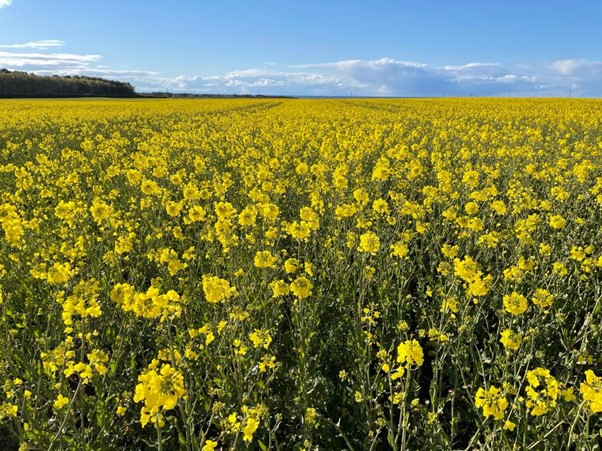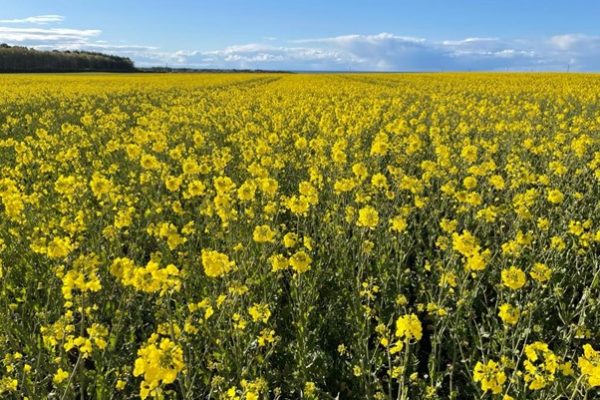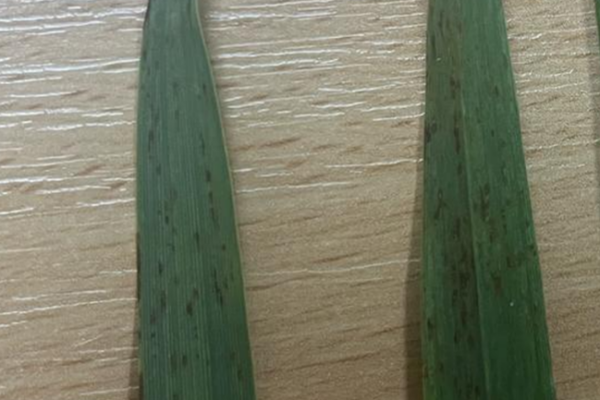Leaf Stripe (Cephalosporium) in Winter Wheat
16 May 2025Cephalosporium leaf stripe is an increasing problem on farms in Scotland where wheat is grown on short rotations. Incidences of the disease have increased in recent years as a consequence of changes in cropping practice and weather patterns, in particular rainfall.
Symptoms usually appear when the flag leaf is emerging or after heading. Broad vertical yellow stripes appear on the leaves of affected plants starting at the base. Surrounding leaf tissue remains healthy and green. Affected leaf tissue will eventually die back and become necrotic while tillers will be stunted and die prematurely. The nodes will also become discoloured inside. Since affected plants die-back prematurely causing whiteheads, late symptoms of the disease can be confused with take-all.

Symptoms will be most common in wetter, compacted areas of fields of winter wheat grown continuously or in short rotations. Crops most at risk are those sown in fields where straw is incorporated into the root zone and where minimum tillage or shallow cultivations are practised.
Wheat yield losses from widespread infection of Cephalosporium leaf stripe have been estimated by growers to be in the region of 0.5 t/ha and it is also common to find the disease in many wheat crops at very low levels in compacted gateways and headlands. Wheat is the major economic host, but other cereal hosts include oats, barley, rye, triticale and grasses such as the Bromes. Spring sown cereals and the resultant trash are also potential carriers, but symptoms are rare. This wide host range causes issues with planning crop rotations for fields where disease levels have built up.
Cephalosporium leaf stripe is caused by the fungus Hymenella cerealis. It is a slow growing fungus in the soil but it is favoured by continuous cereal cropping. The soil borne fungus enters plants via the roots during winter and early spring. Once inside the plant, the fungus moves up causing blockage at the nodes, distinctive leaf symptoms and stunting. At harvest the fungus returns to the soil in the trash.
Removing wheat trash and maintaining a rotation with non-cereal hosts is the best method to reduce the disease. Growers of continuous wheat crops are likely to be reluctant to take this action since it breaks the take-all decline, leading to increase in take-all when wheat is re-sown. There is evidence that take-all fungus and Cephalosporium leaf stripe can compete with each other and where Cephalosporium levels do build up, growers are strongly advised to sow a break crop before it causes an economic loss. Oats or any non-cereal crop would be acceptable (e.g. oilseed rape, potatoes). A break from cereals for a minimum of 2 years would be recommended where the disease has increased to a level to cause economic losses. Where this is not possible, a break using a spring cereal will help to reduce the disease, but it can take longer to reduce the inoculum in the soil.
Mark Bowsher-Gibbs, SAC Consulting
Sign up to the FAS newsletter
Receive updates on news, events and publications from Scotland’s Farm Advisory Service




